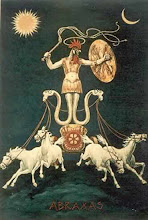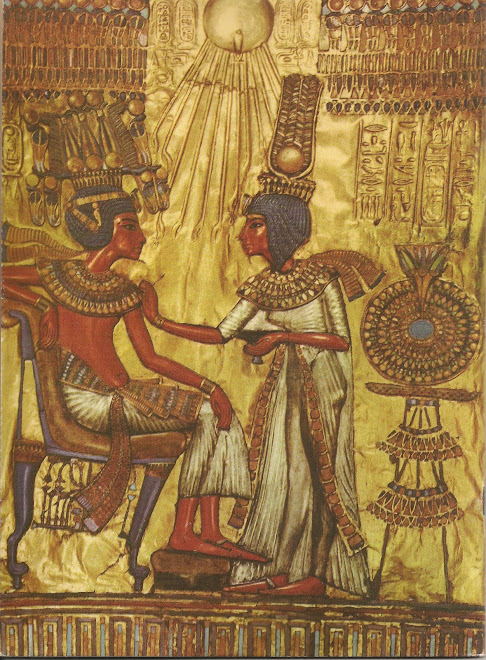| Discipline and Punish | |
|---|---|
 The 1995 Vintage Books edition | |
| Author(s) | Michel Foucault |
| Original title | Surveiller et punir |
| Translator | Alan Sheridan |
| Country | France |
| Language | French |
| Subject(s) | Prisons Prison discipline Punishment |
| Publisher | Gallimard (France) |
| Publication date | 1975 |
| Published in English | 1977 |
| Media type | Print (Hardback & Paperback) |
| Pages | 318 |
| ISBN | ISBN 0-394-49942-5 (First English edition) |
| OCLC Number | 3328401 |
| Dewey Decimal | 365 |
| LC Classification | HV8666 .F6813 1977 |
Discipline and Punish: The Birth of the Prison (French: Surveiller et punir: Naissance de la Prison) is a
1975 book by the French philosopher Michel Foucault. It was translated into English
in 1977 by Alan
Sheridan. It is an interrogation of the social and theoretical mechanisms
behind the massive changes that occurred in western penal systems during the modern age. It focuses on
historical documents from France, but the issues it examines are relevant to
every modern western society. It is considered a seminal work, and has
influenced many theorists and artists.
Foucault challenges the commonly accepted idea that the prison became the
consistent form of punishment due to humanitarian concerns of reformists, although he does not
deny those. He does so by meticulously tracing out the shifts in culture that
led to the prison's dominance, focusing on the body and questions of power.
Prison is a form used by the "disciplines", a new technological power, which can
also be found, according to Foucault, in schools, hospitals, military barracks, etc. The main ideas of
Discipline and Punish can be grouped according to its four parts:
torture, punishment, discipline and prison.
In a later work, Security, Territory, Population, Foucault admits that
he was somewhat overzealous in his descriptions of how disciplinary power
conditions society; he qualifies and develops his earlier ideas.[1]
Contents
|
Overview
Torture
Foucault begins by contrasting two forms of penalty: the violent and chaotic
public torture of Robert-François Damiens, who was
convicted of attempted regicide in
the mid-18th century, and the highly regimented daily schedule for inmates from
an early 19th century prison (Mettray). These examples provide a picture
of just how profound the changes in western penal systems were after less than a
century.
Foucault wants the reader to consider what led to these changes. How did western culture shift so radically? He believes that the question of the nature of these changes is best asked by assuming that they weren't used to create a more humanitarian penal system, nor to more exactly punish or rehabilitate, but as part of a continuing trajectory of subjection. Foucault wants to tie scientific knowledge and technological development to the development of the prison to prove this point. He defines a "micro-physics" of power, which is constituted by a power that is strategic and tactical rather than acquired, preserved or possessed. He explains that power and knowledge imply one another, as opposed to the common belief that knowledge exists independently of power relations (knowledge is always contextualized in a framework which makes it intelligble, so the humanizing discourse of psychiatry is an expression of the tactics of oppression).[2] That is, the ground of the game of power isn't won by 'liberation', because liberation already exists as a facet of subjection. "The man described for us, whom we are invited to free, is already in himself the effect of a subjection much more profound than himself." [3] The problem for Foucault is in some sense a theoretical modeling which posits a soul, an identity (the use of soul being fortunate since 'identity' or 'name' would not properly express the method of subjection—e.g., if mere materiality were used as a way of tracking individuals then the method of punishment would not have switched from torture to psychiatry) which allows a whole materiality of prison to develop. In What is an Author? Foucault also deals with notion of identity, and its use as a method of control, regulation, and tracking. He begins by examining public torture and execution. He argues that the public spectacle of torture and execution was a theatrical forum the original intentions of which eventually produced several unintended consequences. Foucault stresses the exactitude with which torture is carried out, and describes an extensive legal framework in which it operates to achieve specific purposes. Foucault describes public torture as ceremony. The intended purposes were:
"It [torture] assured the articulation of the written on the oral, the secret on the public, the procedure of investigation on the operation of the confession; it made it possible to reproduce the crime on the visible body of the criminal; in the same horror, the crime had to be manifested and annulled. It also made the body of the condemned man the place where the vengeance of the sovereign was applied, the anchoring point for a manifestation of power, an opportunity of affirming the dissymmetry of forces." [4]Foucault looks at public torture as the outcome "of a certain mechanism of power" that views crime in a military schema. Crime and rebellion are akin to a declaration of war. The sovereign was not concerned with demonstrating the ground for the enforcement of its laws, but of identifying enemies and attacking them, the power of which was renewed by the ritual of investigation and the ceremony of public torture.[5] Some unintended consequences were:
Punishment The switch to prison was not immediate. There was a more graded change, though it ran its course rapidly. Prison was preceded by a different form of public spectacle. The theater of public torture gave way to public chain gangs. Punishment became "gentle", though not for humanitarian reasons, Foucault suggests. He argues that reformists were unhappy with the unpredictable, unevenly distributed nature of the violence the sovereign would inflict on the convict. The sovereign's right to punish was so disproportionate that it was ineffective and uncontrolled. Reformists felt the power to punish and judge should become more evenly distributed, the state's power must be a form of public power. This, according to Foucault, was of more concern to reformists than humanitarian arguments. Out of this movement towards generalized punishment, a thousand "mini-theatres" of punishment would have been created wherein the convicts' bodies would have been put on display in a more ubiquitous, controlled, and effective spectacle. Prisoners would have been forced to do work that reflected their crime, thus repaying society for their infractions. This would have allowed the public to see the convicts' bodies enacting their punishment, and thus to reflect on the crime. But these experiments lasted less than twenty years. Foucault argues that this theory of "gentle" punishment represented the first step away from the excessive force of the sovereign, and towards more generalized and controlled means of punishment. But he suggests that the shift towards prison that followed was the result of a new "technology" and ontology for the body being developed in the 18th century, the "technology" of discipline, and the ontology of "man as machine." (Citation needed) Discipline The emergence of prison as the form of punishment for every crime grew out of the development of discipline in the 18th and 19th centuries, according to Foucault. He looks at the development of highly refined forms of discipline, of discipline concerned with the smallest and most precise aspects of a person's body. Discipline, he suggests, developed a new economy and politics for bodies. Modern institutions required that bodies must be individuated according to their tasks, as well as for training, observation, and control. Therefore, he argues, discipline created a whole new form of individuality for bodies, which enabled them to perform their duty within the new forms of economic, political, and military organizations emerging in the modern age and continuing to today. The individuality that discipline constructs (for the bodies it controls) has four characteristics, namely it makes individuality which is:
The Panopticon was the ultimate realization of a modern disciplinary institution. It allowed for constant observation characterized by an "unequal gaze"; the constant possibility of observation. Perhaps the most important feature of the panopticon was that it was specifically designed so that the prisoner could never be sure whether they were being observed at any moment. The unequal gaze caused the internalization of disciplinary individuality, and the docile body required of its inmates. This means one is less likely to break rules or laws if they believe they are being watched, even if they are not. Thus, prisons, and specifically those that follow the model of the Panopticon, provide the ideal form of modern punishment. Foucault argues that this is why the generalized, "gentle" punishment of public work gangs gave way to the prison. It was the ideal modernization of punishment, so its eventual dominance was natural. Having laid out the emergence of the prison as the dominant form of punishment, Foucault devotes the rest of the book to examining its precise form and function in our society, laying bare the reasons for its continued use, and questioning the assumed results of its use. Prison In examining the construction of the prison as the central means of criminal punishment, Foucault builds a case for the idea that prison became part of a larger "carceral system" that has become an all-encompassing sovereign institution in modern society. Prison is one part of a vast network, including schools, military institutions, hospitals, and factories, which build a panoptic society for its members. This system creates "disciplinary careers" [6] for those locked within its corridors. It is operated under the scientific authority of medicine, psychology, and criminology. Moreover, it operates according to principles that ensure that it "cannot fail to produce delinquents.".[7] Delinquency, indeed, is produced when social petty crime (such as taking wood from the lord's lands) is no longer tolerated, creating a class of specialized "delinquents" acting as the police's proxy in surveillance of society. The structures Foucault chooses to use as his starting positions help highlight his conclusions. In particular, his choice as a perfect prison of the penal institution at Mettray helps personify the carceral system. Within it is included the Prison, the School, the Church, and the work-house (industry) - all of which feature heavily in his argument. The prisons at Neufchatel, Mettray, and Mettray Netherlands were perfect examples for Foucault, because they, even in their original state, began to show the traits Foucault was searching for. They showed the body of knowledge being developed about the prisoners, the creation of the 'delinquent' class, and the disciplinary careers emerging.[8] Criticism Theoretical arguments in favor of rejecting the Foucauldian model of Panopticism may be considered under five general headings: 1) Displacement of the Panoptical ideal by mechanisms of seduction,The first point concerns Zygmunt Bauman’s argument that the leading principle of social order has moved from Panopticism to seduction. This argument is elaborated in his 1998 essay ‘On postmodern uses of sex’.[10] The second argument concerns surveillance redundance, and it is increasingly relevant in the age of Facebook and online self-disclosure. Is the metaphor of a panopticon appropriate for voluntary surrender of privacy? The third argument for post-Panopticism, concerning action before the fact, is articulated by William Bogard: The figure of the Panopticon is already haunted by a parallel figure of simulation. Surveillance, we are told, is discreet, unobtrusive, camouflaged, unverifiable – all elements of artifice designed into an architectural arrangement of spaces to produce real effects of discipline. Eventually this will lead, by its means of perfection, to the elimination of the Panopticon itself . . . surveillance as its own simulation. Now it is no longer a matter of the speed at which information is gained to defeat an enemy. . . . Now, one can simulate a space of control, project an indefinite number of courses of action, train for each possibility, and react immediately with pre-programmed responses to the actual course of events . . . with simulation, sight and foresight, actual and virtual begin to merge. . . . Increasingly the technological enlargement of the field of perceptual control, the erasure of distance in the speed of electronic information has pushed surveillance beyond the very limits of speed toward the purest forms of anticipation.[11]This kind of anticipation is particularly evident in emergent surveillance technologies such as social network analysis. The ‘Synopticon’ concerns the surveillance of the few by the many.[12] Examples of this kind of surveillance may include the theatre, the Coliseum, and celebrity tabloid reporting. This “reversal of the Panoptical polarity may have become so marked that it finally deconstructs the Panoptical metaphor altogether”.[9] Finally, the fifth point concerns the self-defeating nature of Panoptical regimes. The failure of surveillance states is illustrated by examples such as “prison riots, asylum sub-cultures, ego survival in Gulag or concentration camp, [and] retribalization in the Balkans.”[9] In their 2007 article, Dobson and Fisher[13] lay out an alternative model of post-panopticism as they identify three panoptic models. Panopticism I refers to Jeremy Bentham’s original conceptualization of the panopticon, and is it the model of panopticism that Foucault responds to in his 1975 Discipline and Punish. Panopticism II refers to an Orwellian ‘Big Brother’ ideal of surveillance. Panopticism III, the final model of panopticism, refers to the high-technology human tracking systems that are emergent in this 21st century. These geographical information systems (GIS) include technologies such as cellphone GPS, RFIDs (radio-frequency identification tags), and geo-fences. Panopticism III is also distinguished by its costs: Panopticon III is affordable, effective, and available to anyone who wants to use it. Initial purchase prices and monthly service fees are equivalent to cell-phone costs. In less than five years, the cost of continuous surveillance of a single individual has dropped from several hundred thousand dollars per year to less than $500 per year. Surveillance formerly justified solely for national security and high-stakes commerce is readily available to track a spouse, child, parent, employee, neighbor, or stranger.[13]See also
References
External links
Wikipedia Article Source: http://en.wikipedia.org/wiki/Discipline_and_Punish
|

.jpg)
.jpg)











+001.jpg)
+001.jpg)
+001.jpg)



+001.jpg)




+001.jpg)
+001.jpg)
+001.jpg)

.jpg)



+001.jpg)

+001.jpg)

.jpg)



Sem comentários:
Enviar um comentário
Nota: só um membro deste blogue pode publicar um comentário.